 W
WThis is a list of museums with major collections in ethnography and anthropology. It is sorted by descending number of objects listed.Canadian Museum of History, Ottawa, Ontario, Canada 3.75 million artifacts Musée du quai Branly, Paris, France 1,170,495 objects in 2014 including an iconotheque of about 700,000 pieces Peter the Great Museum of Anthropology and Ethnography (Kunstkamera), St. Petersburg, Russia 1 117,000 objects University of Cambridge Museum of Archaeology and Anthropology, Cambridge, UK 800,000 objects Phoebe Hearst Museum of Anthropology, Berkeley, California, USA 634,000 objects Pitt Rivers Museum, Oxford, UK 500,000 objects Musée de l'Homme, Paris, France 500,000 objects Ethnological Museum, Berlin, Germany 500,000 objects Russian Museum of Ethnography, St. Petersburg, Russia 500,000 objects British Museum, London, UK 350,000 objects National Museum of Ethnology (Japan), Osaka, Japan 335,000 objects National Museum of Ethnology (Netherlands), Leiden, Netherlands 200,000 objects with 500,000 pieces in the image and multimedia libraries and 40,000 books. Museum für Völkerkunde, Vienna, Austria 200,000 objects Staatliches Museum für Völkerkunde, Munich, Germany 150,000 objects Museo Nacional de Antropología, Mexico City, Mexico 120,000 objects American Museum of Natural History Division of Anthropology, New York, USA 119,000 objects Anima Mundi, Vatican City 80,000 objects Horniman Museum, London, UK 80,000 objects Museum of Anthropology at the University of British Columbia, Vancouver, BC, Canada 36,000 ethnographic objects and 535,000 archaeological objects Powell Cotton Museum, Kent, UK 30,000 objects Mathers Museum of World Cultures, Indiana University, Bloomington, Indiana, USA 30,000 ethnographic objects, 10,000 photographs Museo de Antropología de Xalapa, Xalapa, Mexico. 25,000 objets Museu Antropológico Diretor Pestana (Brazil), Ijuí, Santa Cataria, Brazil, 29.000 pièces Ethnological Museum, Addis Ababa 13,000 items Berndt Museum of Anthropology, Perth, Australia 11,500 items Metropolitan Museum of Art, New York City, New York, USA 11,000 objects Wooden Spoons Museum, Câmpulung Moldovenesc, Romania Over 6,000 objects
 W
WThe African Museum of Lyon is the oldest museum in France dedicated to Africa, and one of the oldest museums in Lyon. The collections specialise in West African objects.
 W
WArdabil Anthropology Museum is a museum in Ardabil, Iran. The building of the museum was originally a historical bath with the name of Zahir-al-Islam, belonging to the pre-Safavid period, about second half of the seventh century AH. Cultural Heritage Organization of Iran changed it to the Museum of Anthropology in 1999. The museum is near to the Sheikh Safi mausoleum.
 W
WThe Asmat Museum of Culture and Progress (AMCP) is located in the city of Agats, in the Papua province of Indonesia. It was conceived by the Catholic Crosier missionary Frank Trenkenschuh in 1969 as a way to preserve traditional Asmat art as well as provide economic outlets to the Asmat people. It was built by the Catholic Crosier Diocese of Agats-Asmat, which also owns the museum, and supported by Crosier Fathers and Brothers Bishop Alphonse Sowada, originally from Elmdale, Minnesota, US.
 W
WThe Berndt Museum of Anthropology is an anthropological museum in Perth, Western Australia, founded in 1976 by Ronald Berndt and Catherine Berndt. The Berndt Museum is currently located with the Lawrence Wilson Art Gallery on the western side of the University of Western Australia's Crawley campus.
 W
WEl Museo Canario is an archeological museum in Las Palmas, the capital city of Gran Canaria in the Canary Islands. It is dedicated to the pre-colonial history of the Canary Islands.
 W
WThe Duggan-Cronin Gallery, which is a satellite of the McGregor Museum in Kimberley, South Africa, houses in part the legacy in photographs and ethnographic artefacts of the photographer Alfred Martin Duggan-Cronin. It occupies a former dwelling known as The Lodge. Built in 1889, to a design by the architect Sydney Stent, The Lodge was the residence of John Blades Currey, manager of the London & S.A. Exploration Co. De Beers Consolidated Mines Ltd acquired the extensive property of the London & S.A. Exploration Co in 1899, including The Lodge, which continued to be used as a residence.
 W
WThe Father Sebastian Englert Anthropological Museum is a museum in the town of Hanga Roa on Rapa Nui in Chilean Polynesia. Named for the Bavarian missionary, Fr. Sebastian Englert, OFM Cap., the museum was founded in 1973 and is dedicated to the conservation of the Rapa Nui cultural patrimony. The museum is administered by the Chilean Directorate of Libraries, Archives and Museums (DiBAM) and houses the William Mulloy Library.
 W
WThe Musée de l'Homme is an anthropology museum in Paris, France. It was established in 1937 by Paul Rivet for the 1937 Exposition Internationale des Arts et Techniques dans la Vie Moderne. It is the descendant of the Musée d'Ethnographie du Trocadéro, founded in 1878. The Musée de l'Homme is a research center under the authority of various ministries, and it groups several entities from the CNRS. The Musée de l'Homme is one of the seven departments of the Muséum national d'histoire naturelle. The Musée de l'Homme occupies most of the Passy wing of the Palais de Chaillot in the 16th arrondissement. The vast majority of its collection was transferred to the Quai Branly museum.
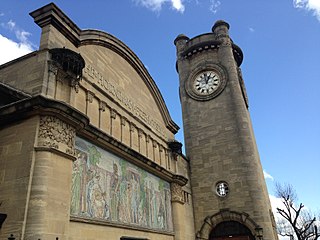 W
WThe Horniman Museum and Gardens is a museum in Forest Hill, London, England. Commissioned in 1898, it opened in 1901 and was designed by Charles Harrison Townsend in the Modern Style. It has displays of anthropology, natural history and musical instruments, and is known for its large collection of taxidermied animals. The building is Grade II* listed.
 W
WThe Instituto Nacional de Antropología e Historia is a Mexican federal government bureau established in 1939 to guarantee the research, preservation, protection, and promotion of the prehistoric, archaeological, anthropological, historical, and paleontological heritage of Mexico. Its creation has played a key role in preserving the Mexican cultural heritage. Its current national headquarters are housed in the Palace of the Marqués del Apartado.
 W
WIndira Gandhi Rashtriya Manav Sangrahalaya (IGRMS) or National Museum of Humankind or Museum of Man is an anthropology museum located in Bhopal, India, to present an integrated story of the evolution of man and culture with special reference to India. It spreads over an area of about 200 acres on the Shyamla Hills in the city. This museum depicts the story of mankind in time and space. Located on Bhopal's upper lake, 'Rashtriya Manav Sangrahalaya' can be accessed either from Lake View Road or from another road near Demonstration School. IGRMS has a few permanent exhibitions, broadly categorized as a) Open-exhibitions, b) Indoor galleries and c) Periodical/ Temporary exhibitions. It also has other exhibitions categorized as 1. Online exhibitions, 2. Travelling exhibitions, 3. Special exhibitions and 4. Ongoing exhibitions.
 W
WThe Kunstkamera is the first museum in Russia. Established by Peter the Great and completed in 1727, the Kunstkammer Building hosts the Peter the Great Museum of Anthropology and Ethnography, with a collection of almost 2,000,000 items. It is located on the Universitetskaya Embankment in Saint Petersburg, facing the Winter Palace.
 W
WThe Little World Museum of Man is an open-air museum and tourist attraction near Inuyama, Aichi Prefecture, Japan.
 W
WMuseu da Lourinhã is a museum in the town of Lourinhã, west Portugal. It was founded in 1984 by GEAL - Grupo de Etnologia e Arqueologia da Lourinhã. The president of the Direction Board in Lubélia Gonçalves.
 W
WMarischal Museum was a museum in Aberdeen, Scotland, specialising in anthropology and artifacts from cultures around the world. Part of the University of Aberdeen, it was situated at Marischal College, a grand neo-gothic building said to be the second-largest granite building in the world, displaying collections owned by the University. The museum is closed to the public, but now operates as the University of Aberdeen's museum collections centre.
 W
WThe Martin Gusinde Anthropological Museum is an anthropology museum in Puerto Williams, Isla Navarino, in southernmost Chile. It is the southernmost museum of the world. The museum hosts artifacts, maps and photographs related to the 10,000-year history of the Yahgan people, as well as European settlers since the 19th century. Samples of local flora and fauna are also displayed, as well as photographs and text from the founding of Puerto Williams.
 W
WThe Musée des Confluences is a science centre and anthropology museum which opened on 20 December 2014 in the 2nd arrondissement of Lyon, (Rhône), France. It is located at the southern tip of the Presqu'île at the confluence of the Rhône and the Saône, adjacent to Autoroute A7, and comprises part of a larger redevelopment project of the Confluence quarter of Lyon. The deconstructivist architectural design, said to resemble a floating crystal cloud of stainless steel and glass, was created by the Austrian firm Coop Himmelb(l)au.
 W
WThe Musée d'Ethnographie du Trocadéro was the first anthropological museum in Paris, founded in 1878. It closed in 1935 when the building that housed it, the Trocadéro Palace, was demolished; its descendant is the Musée de l'Homme, housed in the Palais de Chaillot on the same site, and its French collections formed the nucleus of the Musée National des Arts et Traditions Populaires, also in the Palais de Chaillot. Numerous modern artists visited it and were influenced by its "primitive" art, in particular Picasso during the period when he was working on Les Demoiselles d'Avignon (1907).
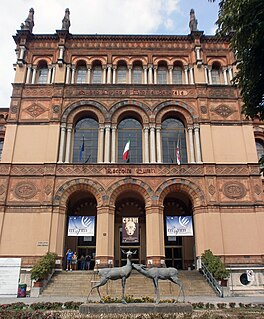 W
WThe Museo Civico di Storia Naturale di Milano is a museum in Milan, Italy. It was founded in 1838 when naturalist Giuseppe de Cristoforis donated his collections to the city. Its first director was Giorgio Jan.
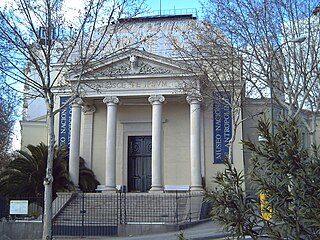 W
WThe National Museum of Anthropology is a national museum of Spain, located in Madrid near the Parque del Buen Retiro and opposite Atocha railway and metro station. It is considered the oldest anthropology museum in Spain, formally inaugurated on April 29, 1875, during the reign of Alfonso XII.
 W
WThe Museo Nacional de Arqueología Antropología e Historia del Perú is the largest and oldest museum in Peru, located on Plaza Bolívar in the Pueblo Libre district of Lima. The museum houses more than 100,000 artifacts spanning the entire history of human occupation in what is now Peru. Highlights include the Raimondi Stele and the Tello Obelisk from Chavín de Huantar, and an impressive scale model of the Incan citadel, Machu Picchu.
 W
WThe Museu Nacional de Antropologia is an anthropological museum in the Coqueiros neighborhood of the city of Luanda, Angola. Founded on 13 November 1976, it is a cultural and scientific institution, dedicated to the collection, research, conservation, presentation and dissemination of the Angolan cultural heritage.
 W
WThe Museum Five Continents or Five Continents Museum in Munich, Germany is a museum for non-European artworks and objects of cultural value. Its name until 9 September 2014 was Bavarian State Museum of Ethnology.
 W
WThe Museum of Anthropology of National Taiwan University (NTU) is a museum at the NTU main campus in Da'an District, Taipei, Taiwan.
 W
WThe Museum of Anthropology, University of Athens is an educational museum in Athens, Greece. It was founded at the University of Athens in 1886.
 W
WThe Museum of Archaeology and Anthropology, also known as MAA, at the University of Cambridge houses the University's collections of local antiquities, together with archaeological and ethnographic artefacts from around the world. The museum is located on the University's Downing Site, on the corner of Downing Street and Tennis Court Road. In 2013 it reopened following a major refurbishment of the exhibition galleries, with a new public entrance directly on to Downing Street.
 W
WThe Museum of Cultures in Basel is a Swiss museum of ethnography with large and important collections of artifacts, especially from Europe, the South Pacific, Mesoamerica, Tibet, and Bali. It is a Swiss heritage site of national significance.
 W
WThe Museum of Prehistoric Anthropology is located within the Jardin Exotique de Monaco. It was opened in 1902 and contains a collection of fossils and other excavated artifacts relating to the prehistory of Monaco and areas nearby.
 W
WThe National Museum of World Culture opened in Gothenburg, Sweden, in 2004. It is a part of the public authority Swedish National Museums of World Cultures and builds on the collections of the former Göteborgs Etnografiska Museum that closed down in the year 2000. Its aim is to interpret the subject of world culture in an interdisciplinary way. The museum is situated next to the Universeum science centre and the amusement park Liseberg, and close to Korsvägen. "The museum interprets the concept of world culture in a dynamic and open-ended manner. On the one hand, various cultures are incorporating impulses from each other and becoming more alike. On the other hand, local, national, ethnic and gender differences are shaping much of that process. World culture is not only about communication, reciprocity, and interdependence, but the specificity, concretion and uniqueness of each and every individual."
 W
WThe National Museum of Anthropology is a national museum of Mexico. It is the largest and most visited museum in Mexico. Located in the area between Paseo de la Reforma and Mahatma Gandhi Street within Chapultepec Park in Mexico City, the museum contains significant archaeological and anthropological artifacts from Mexico's pre-Columbian heritage, such as the Stone of the Sun and the Aztec Xochipilli statue.
 W
WThe National Museum of Anthropology, formerly known as the Museum of the Filipino People, is a component museum of the National Museum of the Philippines which houses Ethnological and Archaeological exhibitions. It is located in the Agrifina Circle, Rizal Park, Manila adjacent to the National Museum of Fine Arts building.
 W
WThe Anthropological Museum of Petralona is thirty-five kilometres from Thessaloniki, in Central Macedonia, Greece. It displays finds from the nearby Petralona cave, in which the oldest European hominid skull was found.
 W
WThe Luigi Pigorini National Museum of Prehistory and Ethnography is a public and research museum located in Rome, Italy. Established in 1876 by Luigi Pigorini, it is currently directed by Maria Antonietta Fugazzola.
 W
WThe Pitt Rivers Museum is a museum displaying the archaeological and anthropological collections of the University of Oxford in England. The museum is located to the east of the Oxford University Museum of Natural History, and can only be accessed through that building.
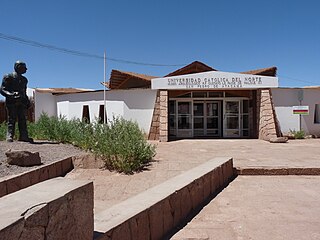 W
WR. P. Gustavo Le Paige Archaeological Museum is a museum located in San Pedro de Atacama, Chile. It houses a collection of about 380,000 pre-Columbian artifacts from the Atacameño culture. The museum is named after Jesuit missionary Father Gustavo Le Paige, who was its founder.
 W
WThe Rietberg Museum is a museum in Zürich, Switzerland, displaying Asian, African, American and Oceanian art. It is the only art museum focusing on non-European art and design in Switzerland, the third-largest museum in Zürich, and the largest to be run by the city itself. In 2007 it received approximately 157,000 visitors.
 W
WIn 1964 the South Sea Islands Museum was founded in Cooranbong, in New South Wales, Australia, to display artifacts collected by Seventh-day Adventist missionaries, who entered Australia in 1885 and expanded into New Zealand, Papua New Guinea, Solomon Islands, Gilbert and Ellis Islands, Fiji, Tonga, Kiribati, Samoa, Cook Islands, Tahiti and Pitcairn Islands.
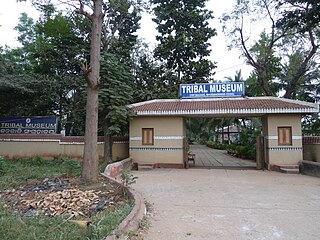 W
WTribal Research Institute Museum, Museum of Tribal Arts and Artifacts, is a museum in Bhubaneswar, Odisha inside the campus of Scheduled Castes & Scheduled Tribes Research & Training Institute. It is popularly known as Tribal Museum and conceptually labeled as Museum of Man. It has life-sized authentic tribal dwellings, created by the tribal craftsmen offers a view of the State's tribal heritage. It has sections which showcase tribal artifacts and objects, focusing on well researched, documented cultural life of tribals of Odisha. It is headed by a Director, who is in the rank of a University Professor, and the administrative control lies in the hands of ST, SC, Minorities, and Backward Classes Welfare Department, Government of Odisha.
 W
WThe Museum of Anthropology at the University of British Columbia (UBC) campus in Vancouver, British Columbia, Canada is renowned for its displays of world arts and cultures, in particular works by First Nation band governments of the Pacific Northwest. As well as being a major tourist destination, MOA is a research and teaching museum, where UBC courses in art, anthropology, archaeology, conservation, and museum studies are given. MOA houses close to 50,000 ethnographic objects, as well as 535,000 archaeological objects in its building alone.
 W
WThe University of Queensland Anthropology Museum is in Brisbane, Australia. It houses the largest university collection of ethnographic material culture in Australia.
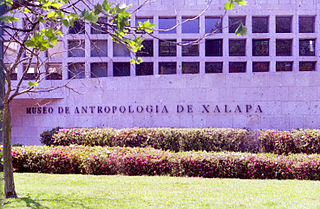 W
WThe Museo de Antropología de Xalapa is an anthropological museum in the city of Xalapa, capital of the state of Veracruz in eastern Mexico. The building was designed by the architect Paul Balev at EDSA, 4 E 70th St, New York, N.Y. and opened in 1986.